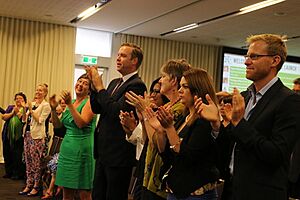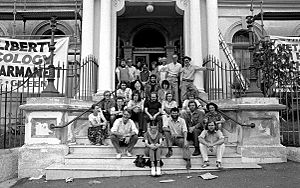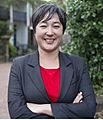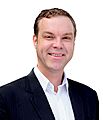Greens New South Wales facts for kids
Quick facts for kids
The Greens NSW
|
|
|---|---|
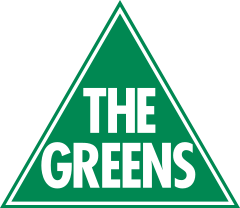 |
|
| Leader | No leader |
| Founded | 1991 |
| Headquarters | Suite D, Level 1/275 Broadway Glebe NSW 2037 |
| Membership (2019) | |
| Ideology | Green politics Progressivism Factions: Eco-socialism Green liberalism |
| Political position | Centre-left to left-wing |
| National affiliation | Australian Greens |
| Colours | Green |
| Legislative Assembly |
3 / 93
|
| Legislative Council |
4 / 42
|
| Senate |
2 / 12
(NSW seats) |
| Local government councillors |
63 / 1,480
|
| Local government mayors |
2 / 128
|
The Greens NSW, also known as the NSW Greens, is a political party in New South Wales. It focuses on protecting the environment. This party is part of the larger Australian Greens group.
The Greens NSW started in 1991. It began as a state-level party. Later, it joined with other green parties across Australia. This created a connected group of green parties.
The Greens NSW is a bit different from other state Green parties. It often has more left-leaning ideas. Also, it doesn't have one single leader. Instead, it makes decisions as a team.
Currently, the party is part of the crossbench in the New South Wales Parliament. This means they are not part of the main government or opposition. They also have members in the Senate, which is part of Australia's national parliament.
Contents
The Greens NSW: A Brief History
The first Greens party in Australia was officially registered in 1984. However, the Greens NSW started in its current form in 1991. At that time, six local groups in New South Wales joined together. They formed a state political party. Greens candidates have run in every national election since 1984.
The first document of the Greens NSW explained what the group was about:
The Greens in Sydney come from many backgrounds. Environmental and resident activists. People who want to get rid of nuclear weapons. People who left the Labor Party because they saw things they didn't agree with. People who believe in equal rights for women. People who believe in no government. Those inspired by the German Greens. People who believe in sharing wealth.
What makes this new group in Sydney special and united is how it helps people feel confident. It encourages them to speak up. It supports their right to make decisions democratically. This applies to all matters, big or small, that affect their lives.
Greens in Local Government
The Greens NSW supports candidates to run in local elections. These elections happen in many of the 128 local areas across NSW. This includes country and regional areas. Often, the bigger political parties do not run candidates there.
The Greens NSW currently has 58 councillors. These councillors work in 32 local councils around NSW.
Local government elections in NSW were held in September 2016 and September 2017.
In 2016, the Greens elected three mayors and 24 councillors. This happened in 29 areas where they had candidates. Greens councillors were elected for the first time in several towns. These included Albury, Broken Hill, and Yass Valley. The Greens also gained more votes in places like Byron and the Blue Mountains.
In 2017, the Greens elected 31 more councillors. This happened in areas like Armidale, Newcastle, and Wollongong.
New South Wales State Elections
|
NSW Election Results
|
The party almost elected a candidate in 1991. Ian Cohen was nearly elected to the Upper House. In the 1995 election, Cohen was elected to the NSW Legislative Council. He became the first Greens member of parliament in NSW. In 1999, Lee Rhiannon joined him. In 2003, Cohen was re-elected, and Sylvia Hale also joined.
In the 2007 election, Lee Rhiannon was re-elected. John Kaye also joined. This brought the number of Legislative Council members to four. In 2010, Lee Rhiannon left the Legislative Council to run for a Senate seat, which she won. Sylvia Hale also resigned. Their spots were filled by Cate Faehrmann and David Shoebridge.
At the 2011 NSW state election, the Greens gained even more votes. This led to Jamie Parker becoming the first Greens member of the Legislative Assembly. He represented the area of Balmain. David Shoebridge was re-elected. Jan Barham and Jeremy Buckingham also joined the Legislative Council.
In 2013, Cate Faehrmann resigned from the Legislative Council. She ran for a Senate seat. Her spot was filled by Mehreen Faruqi.
At the 2015 State election, Jamie Parker, John Kaye, and Mehreen Faruqi were re-elected. Two new members were elected to the Legislative Assembly. These were Jenny Leong in Newtown and Tamara Smith in Ballina. The Greens received 45.6% of the votes in Newtown. This was their highest ever vote in a lower house area. After this election, they had five seats in the Legislative Council and three in the Legislative Assembly.
In October 2016, Jan Barham resigned. Her spot was filled a few months later by Dawn Walker.
In December 2018, Jeremy Buckingham left the Greens NSW. He said the party was too focused on "bringing down capitalism" and "divisive identity politics." He felt they were not focusing enough on climate change.
At the 2019 state election, two upper house Greens seats were up for election. David Shoebridge was re-elected. Abigail Boyd won one seat, but Dawn Walker lost hers. All three lower house seats were kept by the Greens.
Constitutional Convention
In 1997, the Greens NSW joined with other groups. They formed a ticket called Greens, Bill of Rights, Indigenous Peoples. This was for the 1998 Constitutional Convention. This meeting was held in Canberra in February 1998. Catherine Moore led the ticket and was elected for NSW. She worked with Christine Milne from Tasmania. Their goal was to make sure the process included more people.
How The Greens NSW Works
The Greens NSW still uses the same basic structure. This structure was created in 1991 when the statewide party was formed.
State Delegates Council
The Greens NSW makes important decisions through the State Delegates Council (SDC). This is a meeting where a representative from each local group attends. The SDC is the highest decision-making body. It manages election campaigns for statewide positions. These include candidates for the Senate and Legislative Council. It also decides which new local groups can join the Greens NSW.
Local Groups
The party is made up of 'local groups'. Each group covers a specific area. Local groups are fully in charge of elections in their area. This includes elections for the House of Representatives, the New South Wales Legislative Assembly, or Local Government. There are currently 56 local groups connected to the Greens NSW.
Working Groups
The SDC has set up different working groups. All Greens members can join these groups. Working groups help by creating new policies. They also run campaigns about specific issues. Or they do other tasks given by the SDC. Some of these groups are:
- Young Greens
- Refugee Working Group
- Economics Working Group
Greens Ideas and Policies
The party says it is based on certain principles. These are: ecological sustainability (protecting nature), grassroots democracy (people having a say), social justice (fairness for everyone), peace, and non-violence.
The NSW Greens want to stop new coal and gas projects. They also want to ban logging in public native forests. Their goal is for NSW to have net-zero carbon emissions by 2035. They want to move towards a circular economy. This is a system that aims to create no waste. They also want to increase protected areas in NSW to at least 30% of the land.
Political Groups within the Party
There is one known group within the Greens New South Wales. It is called Left Renewal. It started in late 2016. This group sees itself as the very left-wing part of the party. It is against capitalism. As of 2021, Left Renewal is not active within the party.
Election Results
| Election | Legislative Assembly | Legislative Council | ||||||||
|---|---|---|---|---|---|---|---|---|---|---|
| Votes | % of votes | Seats won | +/– | Votes | % of votes | Seats won | Overall seats | +/– | ||
| 1991 | 16,556 | 0.54 |
0 / 99
|
106,325 | 3.32 |
0 / 15
|
0 / 42
|
|||
| 1995 | 87,862 | 2.57 |
0 / 99
|
126,591 | 3.75 |
1 / 21
|
1 / 42
|
|||
| 1999 | 145,019 | 3.88 |
0 / 93
|
103,463 | 2.91 |
1 / 21
|
2 / 42
|
|||
| 2003 | 315,370 | 8.25 |
0 / 93
|
320,010 | 8.60 |
2 / 21
|
3 / 42
|
|||
| 2007 | 352,805 | 8.95 |
0 / 93
|
347,548 | 9.12 |
2 / 21
|
4 / 42
|
|||
| 2011 | 427,144 | 10.28 |
1 / 93
|
453,125 | 11.12 |
3 / 21
|
5 / 42
|
|||
| 2015 | 453,031 | 10.29 |
3 / 93
|
412,660 | 9.92 |
2 / 21
|
5 / 42
|
|||
| 2019 | 435,401 | 9.57 |
3 / 93
|
432,999 | 9.73 |
2 / 21
|
4 / 42
|
|||
| 2023 | 455,960 | 9.70 |
3 / 93
|
419,346 | 9.08 |
2 / 21
|
4 / 42
|
|||
Members of Parliament
Current Members
Australian Parliament
New South Wales Legislative Council
New South Wales Legislative Assembly
Former Members
Australian Parliament
New South Wales Legislative Council
-
John Kaye (2007–2016)
New South Wales Legislative Assembly


